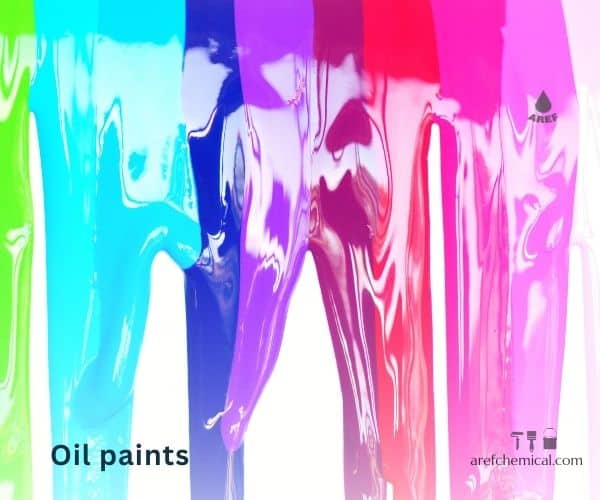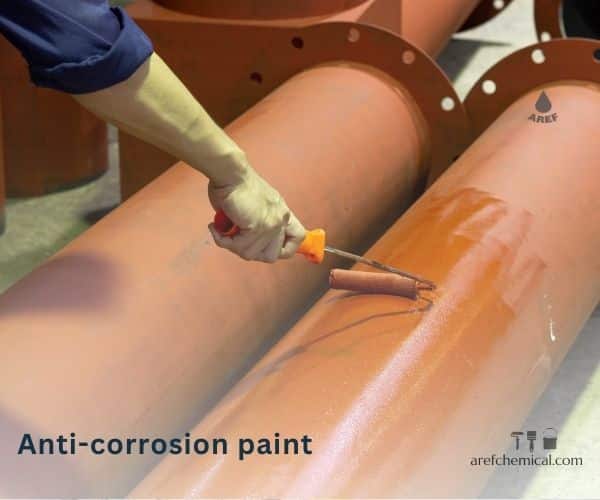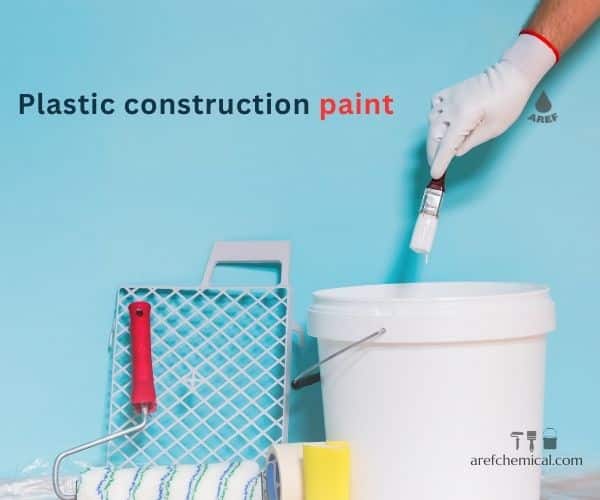Types of building paint are used as key elements in designing and beautifying indoor and outdoor spaces and creating a feeling and experience for the viewer. Choosing the right color can help create a relaxing, energizing, or even creative atmosphere. In addition to aesthetic aspects, colors also have psychological and emotional effects that can affect the mood of the residents and users of the space. In today’s world, the variety of available colors and materials makes it possible for designers and architects to investigate the harmony of colors more creatively and create a unique space that suits people’s daily needs. In this article, we will examine the types of building colors, the characteristics of each, and the important points in their selection.
The importance of color in the building
Colors have played a vital role in people’s lives since a long time ago, and they have deep and impressive effects on building and interior design. Choosing the right color for buildings can affect the residents’ emotions, perceptions, and even health. Colors can evoke different emotions and affect the environment we are in. For example:
– Warm colors such as red and yellow induce a sense of energy and freshness.
– Cold colors such as blue and green convey the feeling of calmness and stillness.
– Neutral colors such as white, gray, and beige add glory and simplicity to the space.
In the following, we will introduce the types of building paint.
Acrylic paints
Due to their high resistance to water and UV, acrylic paints are a good choice for facades and interior walls. These types of paints have a faster drying time and usually produce less odor. Acrylic paints are water-based paints made from acrylic resin. These colors are very popular due to their properties such as quick drying, shine, and high mixability. Some of the main characteristics of acrylic paints are:
Quick drying: Acrylic paints typically dry within minutes, which allows artists to quickly add multiple layers of paint.
Water Solubility: Acrylic paints dissolve in water before drying, so cleaning tools and supplies is very easy.
Variety of colors: Types of building paint are available in a wide range of colors and tones, and they can also be combined.
Durability: After drying, acrylic paints are resistant to water and UV light and therefore can be stored in different conditions.
Various uses: these colors are suitable for different surfaces such as canvas, wood, paper, and even walls.
It can be said that acrylic paints are an excellent choice for artists, designers, and art lovers due to their characteristics.
Oil paints
Oil paint is one of the famous types of paint that is used in the accent color of buildings and interior and exterior decoration. These types of colors have unique features and benefits due to their special compositions. Due to their high coverage and durability, they are suitable for use in high-traffic areas. But they take longer to dry and may produce a strong smell. It may be necessary to use solvents such as thinner to prepare and dilute the paint.
Features and benefits of oil paint:
- High Durability: Oil paints are generally resistant to damage, moisture, and UV rays and last longer.
- Glossy surface: These paints usually have a glossy texture that increases the visual appeal of surfaces and adds depth and polish to certain surfaces.
- Resistance to scratches and damage: These colors are well resistant to physical scratches and can be suitable for places that are subject to more damage.
- Washability: Surfaces painted with oil paint are easy to clean and resistant to stains.
- Variety of colors and textures: Oil paints are available in a variety of colors and textures, which allows designers and contractors to express their creativity.
Applications:
– Inside the building: It is used for painting doors, frames, windows, and some internal walls that require high resistance.
– Outside the building: due to its high resistance to weather conditions, these colors are also used for painting facades and external surfaces.
It may be necessary to use solvents such as thinner to prepare and dilute the paint.
Due to these characteristics, oil paint is a suitable option for certain applications in building and decoration, especially in places that require high durability and resistance.
Aluminum color
This color refers to a silvery or silvery gray color that resembles the appearance of aluminum metal. This color usually has a high gloss and reflectivity and is very popular due to the properties of aluminum, including resistance to rust and corrosion. Aluminum paint is commonly used in various industries, including:
- Automotive industry: for car bodies and interior components.
- Household appliances: such as refrigerators, ovens, and washing machines.
- Electronics: such as computer cases and accessories.
- Building: for facades of buildings and aluminum doors and windows.
In addition to beauty, this color is durable and has a longer life due to the physical and chemical properties of aluminum.
Anti-corrosion paint
This paint is a special coating designed to protect metal surfaces against rust and corrosion. These paints usually contain substances that protect the metal from environmental influences such as moisture, air, and chemicals.
Features and benefits of anti-corrosion paints:
- High resistance: These colors usually have high resistance to water, humidity, and chemicals.
- Proper coating: they are able to cover the surfaces well and prevent direct contact of air and moisture with the metal.
- Strength: some types of anti-corrosion paints have high adhesion and mechanical strength.
- Long life: These paints usually last longer than regular paints and require less maintenance.
Types of anti-corrosion paints:
- Oil-based paints: they have anti-rust properties and are usually used for internal and external metal surfaces.
- Epoxy paints: These types of paints are used in various industries due to their high resistance to chemicals and corrosion resistance.
- Polyurethane paints: These paints provide excellent protection against corrosion by creating a hard and resistant layer.
- Galvanized paints: These paints contain zinc and naturally protect the metal against rust.
The use of anti-corrosion paints is very common, especially in the construction, marine, and petrochemical industries.
Bituminous building paint
Bituminous construction paint, also known as “bituminous paint”, consists of a type of coating, usually made of bituminous compounds, resins, and other additives. This paint is mainly used to provide protection against moisture and corrosion on various building surfaces. It also has anti-alkaline properties. When working with bituminous paints, it is important to properly ventilate the area, as its fumes are likely to be harmful.
Features and applications of bituminous paint:
Features
- Water resistance: This paint prevents water penetration to the underlying surfaces and is usually suitable for surfaces that are exposed to moisture.
- Anti-rust: Bituminous paint can act as a protective layer for metals and prevent them from rusting.
- UV resistance: Some bituminous formulations can have good resistance to the UV rays of the sun.
- High adhesion: This type of paint usually has high adhesion to all types of surfaces and can be easily applied.
- Insulation: Due to the insulation properties of this paint, it is used to prevent moisture from entering buildings and structures.
Applications
– Roofs: used to cover and insulate roofs against moisture.
– Foundations and walls: It is used as moisture-proof insulation in foundations and walls that are in contact with the soil.
– Metal surfaces: protection of metal surfaces against rust.
– Roads and paths: It is used to create a protective layer on asphalt surfaces.
Cement base color
Cement base paint is usually made using cement, water, and pigments. This type of paint has special characteristics due to its compounds and is used in various applications. These colors are breathable and prevent the accumulation of moisture inside the walls. Due to the use of natural materials, these paints are usually less harmful to the environment. For this color, the surface must be well cleaned and prepared for the best adhesion and result.
Features:
- Cement-based paints usually have high resistance to atmospheric conditions, UV rays, and wear.
- These paints are insulating and can effectively reduce moisture penetration, especially on exterior surfaces.
- Cement base colors are usually resistant to fading and abrasion.
- Due to the use of cement in its composition, this type of paint has high durability.
- The drying time of cement base color may be longer than other colors, so it requires more patience.
Applications:
– Walls and external surfaces: very suitable for use in facades of buildings and external walls.
– Interior spaces: It can also be used for interior walls, especially in places that require more resistance.
– Roofs: It is also desirable for the safety and beauty of the roofs.
Synthetic plastic paint
Synthetic plastic paint is made from chemical compounds and is usually produced based on synthetic resins such as acrylic or vinyl. These types of colors are used as interior and exterior coatings and have their own characteristics. Most plastic paints contain less toxic substances and do not have strong odors. They can be easily used on different surfaces such as plaster, concrete, and wood. It is better that the surface is clean and dry before painting, and for the best coverage, several layers of paint may be needed.
Characteristics of synthetic plastic paint:
- Permanence of color: Plastic colors usually have high stability and are resistant to UV light.
- Washability: Most plastic paints are washable and easy to clean.
- Fast drying time: These paints dry faster than some other paints.
- Moisture insulation: they help prevent moisture penetration.
Synthetic plastic color applications
– Interior walls: very suitable for use in interior spaces such as bedrooms, living rooms, and kitchens.
– External surfaces: some of their types are also suitable for use on the facade of buildings.
Ethyl silicate paints
They are a type of resistant paint with high adhesiveness, which are produced based on organic silicates. These paints are used for various surfaces, including metal, concrete, and wood, due to their waterproof properties, heat and UV resistance, and high durability. Also, they are usually used in the marine, construction, and automotive industries and are considered a suitable option for harsh environments due to the creation of resistant coatings.
Graphite color
Graphite color in the building refers to a dark and opaque color that is usually similar to black or gray and has certain characteristics. This type of color is widely used in interior and exterior design due to its modern and stylish appearance.
Characteristics and applications of graphite paint:
- Aesthetics: Graphite color gives depth and personality to the space and is easily coordinated with other colors and decorations.
- Dirt resistance: These colors usually have the ability to hide dirt and scratches and are therefore suitable for high-traffic areas.
- 3. Use on different surfaces: Graphite paint can be used on walls, furniture, and even tools and have a significant impact on the overall design of the space.
- Insulation: Some graphite paints have moisture and heat insulation properties that can help improve the building’s energy performance.
In general, graphite color is one of the popular options in the design of buildings and interior decoration.
Plastic construction paint
Plastic construction paint is a type of paint that is prepared based on plastic resins and is used to cover the internal and external surfaces of buildings. Due to their special characteristics, these colors have become one of the most popular options in the paint and decoration industry. Plastic paints are commonly used to paint walls, ceilings, and even some indoor and outdoor furniture. Also, these colors are also used in commercial and industrial projects due to their good properties.
Features and advantages of different types of plastic building paint:
- Drying speed: Plastic paints usually dry quickly and can be easily applied to different surfaces.
- Resistance to water and moisture: These colors are resistant to moisture and rain, and for this reason, they are suitable for wet spaces such as bathrooms and kitchens.
- Variety of colors: Types of building paints are available in a wide range of colors and shades, which allows designers and building owners to design their desired spaces with a special taste.
- Washability: Most plastic paints can be cleaned and dirt can be easily removed from them.
- Durability and longevity: With new technologies, plastic paints can be highly durable and resistant to environmental factors such as UV and dirt.
- Water-based: Many plastic paints are water-based, so they emit less VOC (volatile organic compounds) and are more suitable for health and the environment than oil paints.
If you like pastel colors, read here.
Types of building paint (cellulose)
Cellulose paint is a type of paint that is produced based on synthetic cellulose fibers and solutions such as water or organic solvents. These types of colors are used in various industries due to their special properties and have become very popular.
Features and advantages of cellulose construction paints:
- Fast drying: Cellulosic paints dry quickly and require less time for surface preparation.
- Washability: These colors are usually resistant to dirt and stains and can be easily cleaned.
- moisture resistance: Cellulosic paints are usually resistant to moisture and can be used in humid environments.
- Variety of colors: These paints are available in a wide variety of colors and shades that provide a variety of design choices.
- Eco-friendly: Many cellulosic paints are blue-based and therefore contain, less VOCs (Volatile Organic Compounds), which are better for health and the environment.
Emulsion paint
(Emulsion Paint) is a type of water-based paint that usually contains acrylic or vinyl resins. These colors are very popular in painting interior and exterior surfaces due to their combination properties and special advantages.
Characteristics and advantages of emulsion paint:
- Fast drying: Emulsion paints dry quickly, which means that little time is required for painting.
- Washable: Many emulsion paints are resistant to stains and dirt and are easily cleaned with soap and water.
- Odorless: These paints usually have little or no odor, making them suitable for indoor environments.
- 4. Eco-friendly: Emulsion paints typically contain less volatile organic compounds (VOCs), making them better for the environment and human health.
- Color flexibility: Types of building paint emulsions are available in a wide variety of colors and textures, giving designers and contractors many choices.
Application of emulsion paint
Emulsion paint is mainly used for painting walls and ceilings in residential and commercial buildings. It is also suitable for painting some furniture and interior decoration.
Tips:
– Before use, the surface must be thoroughly cleaned and prepared.
– Usually, it is necessary to apply several layers of paint to increase the useful life and quality of the paint.
– Choosing the right emulsion color depends on the type of surface, weather conditions, and type of light.
Emulsion paints are one of the main options for painting in many projects due to their ease of use and favorable properties.
conclusion
Before choosing any types of building paint, it is necessary to familiarize yourself with your surroundings. Paying attention to the color of the adjacent walls, ceiling, and building materials can help to coordinate more. Building colors are not only a part of interior and exterior decoration but also have many psychological and physical effects. Choosing the right color not only affects the aesthetics of the building, but can also affect the quality of life of the residents. Therefore, in choosing a color, use professional advice and consider all aspects of the matter.







16 Responses
good luck
https://behdama.com/%da%af%db%8c%d8%ac-%d9%81%d8%b4%d8%a7%d8%b1/
that’s awesome
https://behdama.com/%da%af%db%8c%d8%ac-%d9%81%d8%b4%d8%a7%d8%b1/
great
https://behdama.com/%d8%a8%d9%88%d8%b3%d8%aa%d8%b1-%d9%be%d9%85%d9%be-%d8%a2%d8%aa%d8%b4%d9%86%d8%b4%d8%a7%d9%86%db%8c/
fantastic
https://behdama.com/%d9%81%db%8c%d9%84%d8%aa%d8%b1-%d8%b1%d8%b2%db%8c%d9%86-%d8%aa%d8%b5%d9%81%db%8c%d9%87-%d8%a2%d8%a8/
thank you
https://behdama.com/%d9%85%d9%82%d8%a7%db%8c%d8%b3%d9%87-%da%a9%d9%88%d9%84%d8%b1-%da%af%d8%a7%d8%b2%db%8c-%d9%88-%da%a9%d9%88%d9%84%d8%b1-%d8%a2%d8%a8%db%8c/
bravo
https://behdama.com/%d9%be%d9%85%d9%be-%d8%ac%da%a9%d9%88%d8%b2%db%8c/
youre right
https://behdama.com/%d9%be%da%a9%db%8c%d8%ac-%d8%a8%d8%b1%d9%82%db%8c/
i appreciate
https://tavatranslation.com/%da%a9%d8%a7%d8%b1-%d8%af%d8%b1-%d9%81%d8%b1%d8%a7%d9%86%d8%b3%d9%87/
well i think so
https://tavatranslation.com/%da%a9%d8%a7%d8%b1-%d8%af%d8%b1-%d9%81%d8%b1%d8%a7%d9%86%d8%b3%d9%87/
thanks
https://tavatranslation.com/%da%a9%d8%a7%d8%b1-%d8%af%d8%b1-%d9%81%d8%b1%d8%a7%d9%86%d8%b3%d9%87/
Choosing the right paint for a building involves understanding the various types available, their effects on aesthetics and functionality.
Latex Paint,Water-based, easy to clean, low odor, and quick-drying. Good for most indoor applications. Oil-Based Paint, Offers a durable finish and is excellent for high-traffic areas but requires solvents for cleanup and longer drying times.
Acrylic Exterior Paint Highly durable, resistant to fading and moisture, ideal for various weather conditions. Oil-Based Exterior Paint Excellent for wood surfaces, provides a tough finish, but requires careful application and longer drying times.
Elastomeric Paint, Thick and flexible, it can bridge small cracks in surfaces, making it ideal for concrete and masonry.
Anti-Mold or Mildew Paint: Contains additives to prevent the growth of mold and mildew, suitable for bathrooms and kitchens.
Designed to reduce heat absorption, making buildings more energy-efficient.